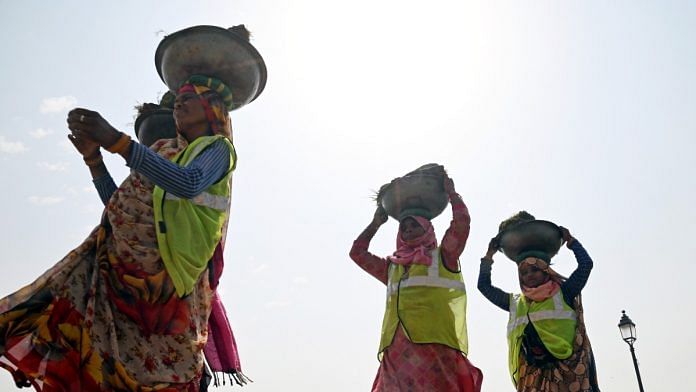New Delhi: The Indian economy is not only better placed to handle global headwinds than its emerging market counterparts, but it also recovered from the COVID-19 pandemic shock faster than it did from previous crises, the World Bank said Tuesday.
In its latest India Development Update titled ‘Navigating the Storm’, the World Bank projected India’s GDP growth for the current financial year at 6.9 per cent, slightly higher than the 6.5 per cent it projected for the year at the end of September. For financial year 2023-24, the report projects India to grow at 6.6 per cent, down from the earlier projection of 7 per cent.
“It must be emphasised that, at the end of the two-year period, India will be in the same position as we had earlier predicted,” Dhruv Sharma, Senior Economist at the World Bank, said. “What has happened is that this year’s growth is expected to be faster than projected, while next year’s growth is expected to be slower than earlier thought.”
This, he said, was because even the slowdown in global growth this year was not as pronounced as was expected, but would instead be transferred to next year, which would see global growth slowing more than earlier projected.
“India’s economy has been remarkably resilient to the deteriorating external environment, and strong macroeconomic fundamentals have placed it in good stead compared to other emerging market economies,” Auguste Tano Kouame, World Bank’s Country Director in India said. “However, continued vigilance is required as adverse global developments persist.”
A “well-crafted and prudent policy response” to global spillovers is helping India navigate global and domestic challenges, Sharma added.
The report noted that the two main levers of macroeconomic policy — fiscal and monetary policy — have played a role in managing the challenges that have emerged over the last year. The Reserve Bank of India (RBI) withdrew its accommodative monetary policy settings in a “measured approach” as it balanced the need to cool down inflation while also providing support to economic growth, it said..
Sharma pointed out that several ‘policy buffers’ created over the last few years have improved the Indian economy’s resilience to external shocks. These buffers include the Asset Quality Review by the RBI in 2015, the implementation of the Insolvency and Bankruptcy Code, and the 2016 inflation-targeting framework adopted by the RBI, he said.
“During the pandemic, the government also took a measured approach that saw that the supply side was at least as important to address as the demand side,” he said.
The World Bank conducted a multifaceted analysis to measure where the Indian economy stands currently as compared to its emerging market peers and also as compared to the economic fallout of the global financial crisis.
“India is better positioned this time to manage external shocks, compared to its peers and in the run-up to the taper tantrum in 2013,” it said.
The analysis shows that India’s Nominal Effective Exchange Rate (NEER) and Real Effective Exchange Rate (REER) are both in a better position now as compared to its peers than it was in May 2013, just before the ‘taper tantrum’ episode — adverse reactions of investors to the central bank slowing or stopping bond purchases — in the global economy. Similarly, inflation is in better shape, as is the corporate debt to GDP ratio.
Also Read: GDP data this week will indicate FY23 outlook. But analysis shows growth still below pre-Covid yrs
Informal sector jobs being created
While the economists at the World Bank agreed that employment creation was a major roadblock for India’s growth ambitions, they felt that the impression that the country was not creating jobs was incorrect.
“One sense one gets about the Indian economy is that jobs are being created but they are being created in the informal sector,” Kouame explained. “So when you look at the national accounts, it might show that jobs are not being created, but they are.”
However, in a situation where the government cannot mandate increased formalisation of the economy, the challenge is to create incentives for increased job creation in the formal sector, he said.
“The other issue is, of course, skilling,” he added. “Is the education system ready for the new jobs that will be created? Is the vocational training system ready to re-skill people to take up new jobs?”
Another factor the World Bank pointed out was the importance of encouraging women to join the workforce.
“Female labour force participation in India is among the lowest in the world,” Kouame said. “Global data shows that when one woman works, this creates on average three jobs. Daycare and other support systems for working mothers create jobs.”
(Edited by Tony Rai)



